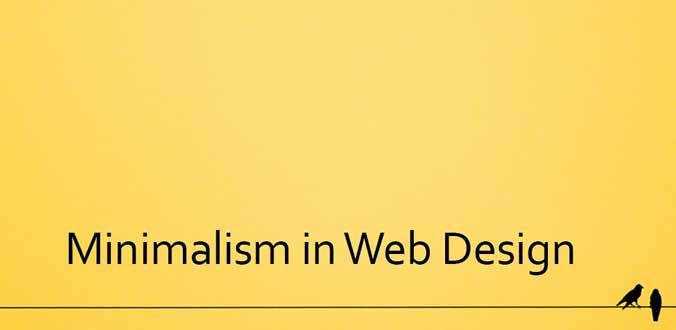The ‘less is more’ mentality is all the rage among web designers these days, and it seems as if all web design service providers have declared a crusade against clutter. The clean and clutter free designs are a welcome change from some of the horrendous displays we have seen in the past, and it seems the trend will continue throughout 2013.
The increasing number of smartphone and tablet users has also contributed to this trend, because usability and clarity of message takes precedence when it comes to smaller screens.
Whether fixing a previous design or creating a new one from scratch, a web designer has to:
Determine a Focus
Minimalistic designs have a clear focus that is highlighted through the content. The whole point of creating a slick and clean web design is to put the spot light on the content, and to make the design play a secondary role to enhance the effect of the web content. The focus of the website is influenced by the goal of the company/person for whom the website is being created. Usually, a website focuses on:
- Selling products and/or services
- Reinforcing a brand image
- Displaying the works of an artist/ a group of artists (including photographers, writers, etc.)
- Increasing awareness about a cause
- Collecting funds for a cause
- Providing free information about a topic or a number of topics
- Advertising
When a web designer knows exactly why the website is being created, achieving a minimalistic design becomes easy.
Determine What’s Needed
To create a minimalistic design, the elements and features need to have alignment and unity. The web designer also has to sort out what is needed and what can be removed without taking away from the user experience. That flash banner may look awesome, but do you really need it?
When it comes to features, instead of removing them in the latter stages, it is best not to include them in the first place. Before adding anything to the design, web designers must ask themselves if the web design can do without it, and if the answer is yes, they should not add that feature in the design.
Ensure That the Usability is Not Affected
Sometimes the quest for achieving a minimalistic design can lead to reduced usability. When features are being taken away, or not included in the first place, it is important to keep the usability factor in mind. The user should be able to identify what page they are currently navigating, should always have a way to the previous page and to the home page, and should be able to identity hyperlinks and buttons. Also, the website should run equally well on all platforms and browsers.





